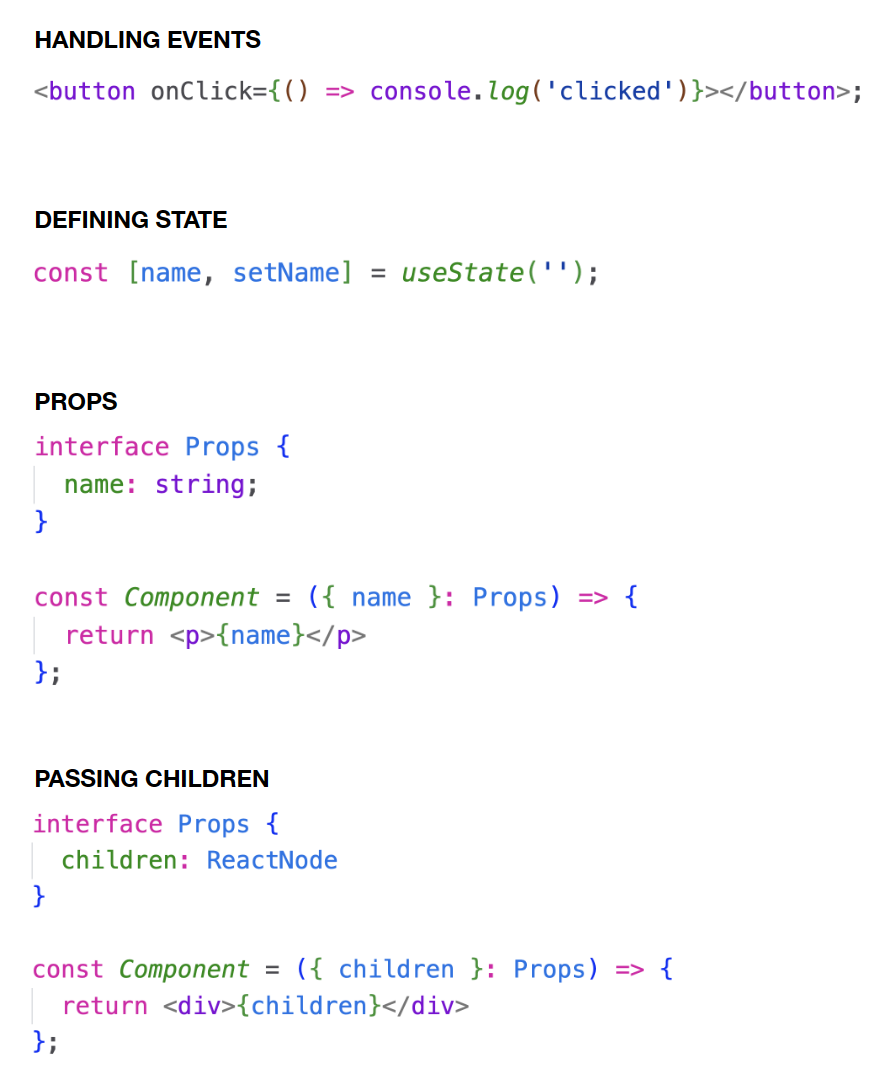Reboot studies!
•In React apps, a component can only return a single element. To return multiple elements, we wrap them in a fragment, which is represented by empty angle brackets.
•To render a list in JSX, we use the ‘array.map()’ method. When mapping items, each item must have a unique key, which can be a string or a number.
•To conditionally render content, we can use an ‘if’ statement or a ternary operator.
•We use the state hook to define state (data that can change over time) in a component. A hook is a function that allows us to tap into built-in features in React.
•Components can optionally have props (short for properties) to accept input.
•We can pass data and functions to a component using props. Functions are used to notify the parent (consumer) of a component about certain events that occur in the component, such as an item being clicked or selected.
•We should treat props as immutable (read-only) and not modify them.
•When the state or props of a component change, React will re-render the component and update the DOM accordingly.

